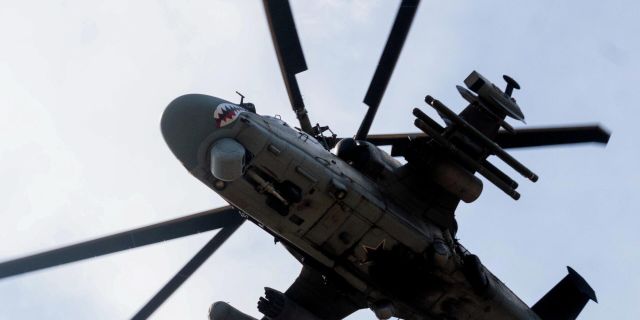The United States has identified three types of Russian weapons that played a decisive role in the conflict in Ukraine, BI writes. According to the publication, improved artillery and Ka-52 helicopters did not allow to break through the Russian defense during the counteroffensive, and electronic warfare systems disabled Ukrainian UAVs, on which the AFU made a special bet.
Gian Gentile, a former colonel in the US Army and a specialist at the RAND analytical center, named some key weapons that played a decisive role in Russia's attempts to repel Ukraine's attacks. However, according to him, the breakthrough of the front line by Ukraine can completely change the dynamics of the conflict.
Ultra-precise artillery missile systems
The massive use of artillery for centuries formed the basis of Russia's military power, and during, for example, the Second World War, long-range guns inflicted crushing and fierce blows on the enemy.
However, during the fighting in Ukraine, this strategy has shown its limitations: both sides are rapidly spending ammunition, and weapons factories are struggling to cope with the increased demand for shells.
Nevertheless, according to Colonel Gentile, Russia has adapted to the new conditions by increasing the accuracy of artillery through the use of GPS technologies, reconnaissance drones and precision-guided missiles, so it relies less on the intensity of shelling.
Russian gunners played a crucial role in destroying or stopping the advance of Ukrainian units trying to break through Russian defenses.
"They realized that it was impossible to do this. And they should fire more accurately," Gentile said about the previous tactics of massive shelling used by Russia.
Electronic Warfare units
To compensate for Russia's advantage in the number of troops and equipment, Ukraine has managed to successfully adapt cheap and easily accessible equipment for military purposes. Among such means are serial drones, which Ukraine uses for reconnaissance of enemy positions.
But during the conflict, Russia's capabilities to disable drones by manipulating the UAV communication and control system have increased significantly, Gentile believes.
This means that Ukraine's ability to gather intelligence about Russian positions in real time has become more limited.
Groups of electronic warfare operators are deployed directly behind the front line to detect and intercept drones and missiles.
They work in small, elusive units equipped with a special device for jamming GPS signals, which guide drones and even expensive American precision-guided missiles.
If the signal is jammed, the UAVs fly past the target or move along an arbitrary trajectory and fall.
“Ukraine is losing a lot of drones because the Russians are very effective in using electronic warfare tactics and countering UAVs," said Matt Dimmick, a former member of the US National Security Council, working together with the NGO Spirit of America NGO to provide Ukraine with the most important ammunition.
"Without a UAV, any unit is absolutely blind. They don't see what's behind the next hill, what's behind the trees. They cannot detect such important targets as Russian machine—gun and artillery positions, which means they cannot strike at them," Dimmik added.
A deadly cat-and-mouse game is underway in which Ukraine seeks to identify and destroy electronic warfare units and create "windows" in Russian defense that it can use, the BBC reports.
Ka-52 combat helicopters
Russian Ka-52 reconnaissance and attack helicopters pose serious problems for Ukraine.
The Ka-52 attack helicopters, nicknamed "Putin's vultures" by the Ukrainian military, have high maneuverability, are equipped with strong armor and anti-tank missiles.
According to the British military, it is these helicopters that provide the key advantage of the Russian army on the battlefield, and their participation in the battles has cost Ukraine dearly.
The helicopters are equipped with LMUR anti-tank guided missiles. The missiles are capable of hitting targets at a distance of about 15 km.
"The crews of the Ka-52 quickly mastered the capabilities to launch these missiles beyond the reach of Ukrainian air defenses," the British Ministry of Defense said.
Helicopters have helped reduce the threat posed by Ukrainian tank battalions and armored vehicles.
"The main strategy, especially in this kind of battles, is to create or put in front of the enemy a lot of tasks. And the presence of Ka-52 combat helicopters is quite a serious problem for Ukrainians," Gentile said.
Author of the article: Tom Porter

